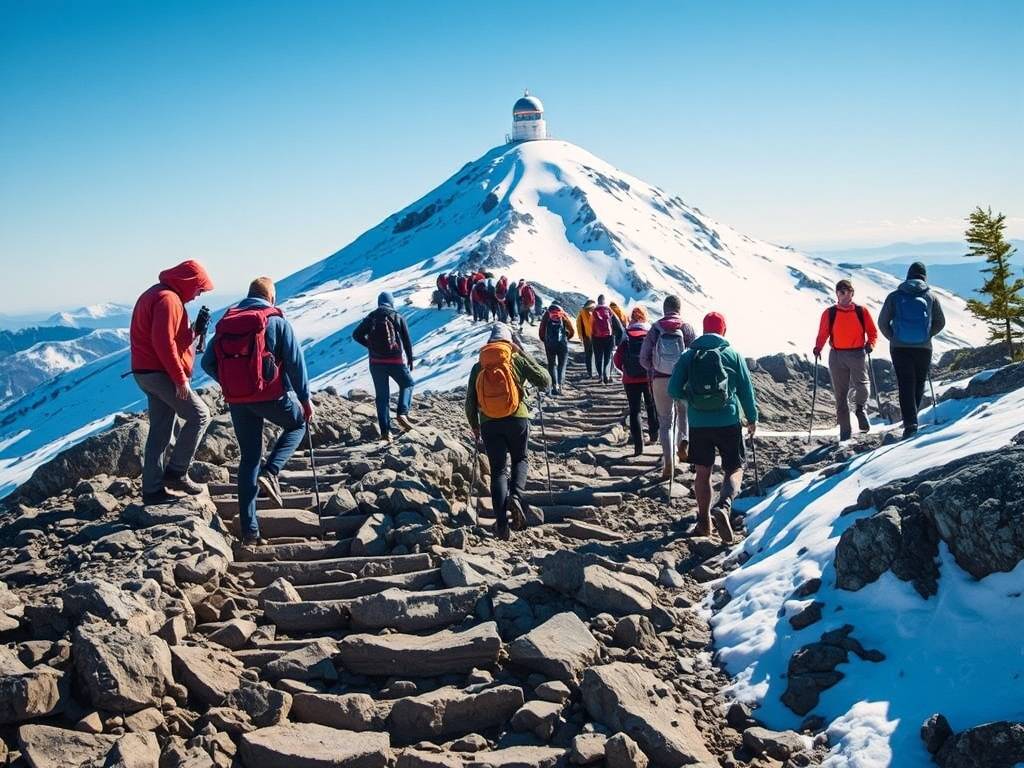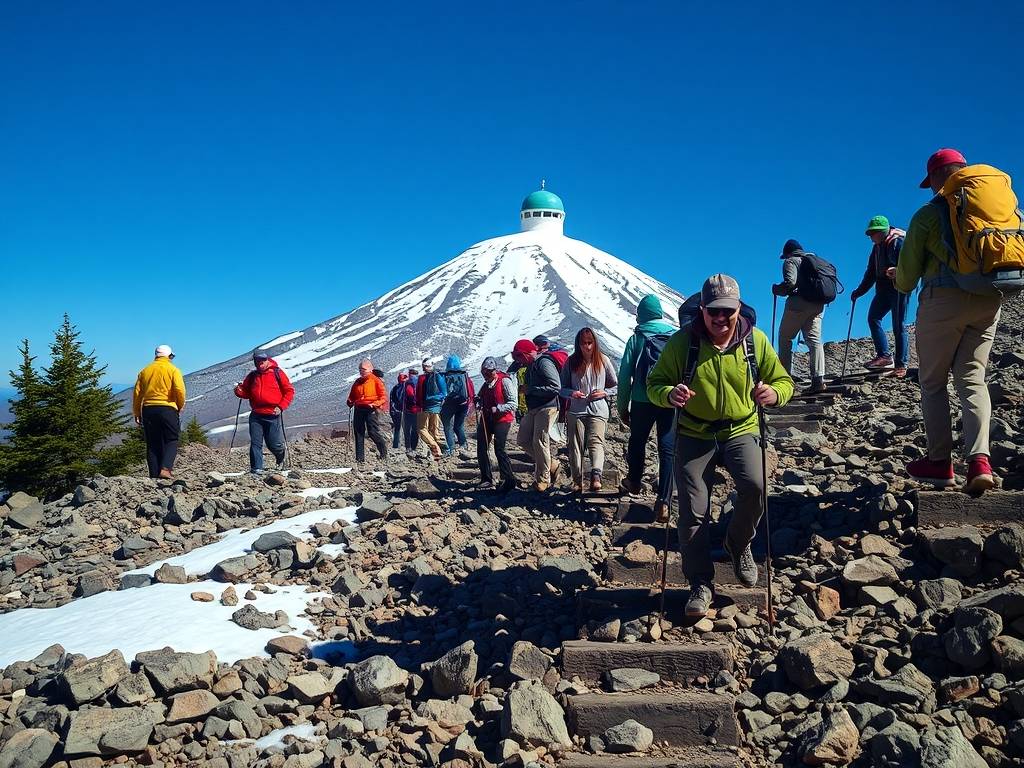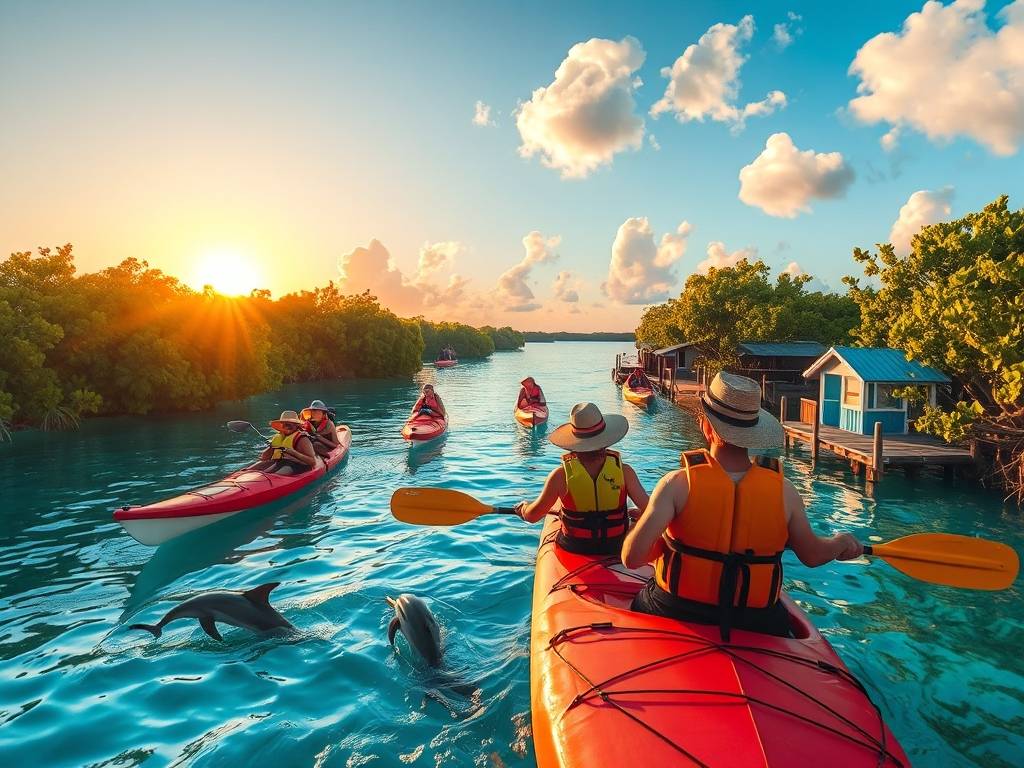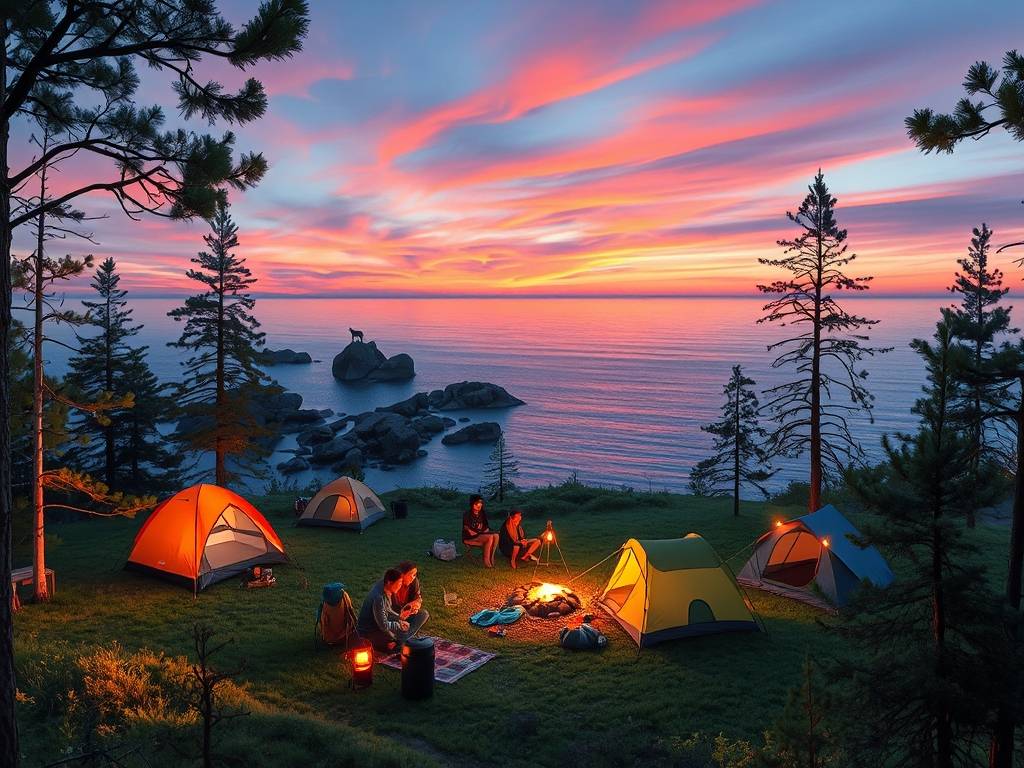USA Travel
US Travel: Climbing New Hampshire’s Mount Washington
Conquering the Crown of New England: Your Ultimate Guide to Climbing Mount Washington
There’s a mountain in the heart of New England that commands respect. It’s not the tallest peak in the United States by a long shot, but what it lacks in sheer height, it more than makes up for in sheer personality. This is Mount Washington, the highest peak in the Northeastern U.S., and climbing it is a quintessential American adventure. Whether you're a seasoned hiker or an ambitious beginner, the call to stand atop its rocky summit, having conquered the famous Auto Road only in spirit, is a powerful one. This guide is your trusted companion, designed to answer every question and prepare you for an unforgettable journey into the White Mountains.
The allure of Mount Washington is legendary. Known for having the "World's Worst Weather," this peak is a challenge that beckons thousands each year. The journey to the summit isn't just a hike; it's a pilgrimage. You’ll follow in the footsteps of generations, traversing stunning alpine landscapes, and earning bragging rights that last a lifetime. But this is not a trek to be taken lightly. Proper preparation is the difference between a triumphant memory and a dangerous ordeal. Let’s lace up our boots and start planning.

Choosing Your Path to the Summit
Your first major decision is selecting your route. The Mount Washington hiking trails vary dramatically in difficulty, scenery, and length. There are over a dozen paths up the mountain, but a few stand out as the most popular and rewarding for a one-day ascent.
-
The Jewel of the East: Tuckerman Ravine Trail. This is the classic Mount Washington climb. Steeped in history, this trail is famous for its dramatic headwall—a vast, bowl-shaped cirque that remains snow-filled well into the summer. The ascent up the headwall is steep and rugged, involving a scramble over large boulders. It’s a physically demanding route, but the views back into the ravine are absolutely spectacular. This is the trail for those who want the full, raw, and historic Mount Washington experience. Many hikers choose to make a loop by descending via the Lion Head Trail, which offers breathtaking exposure and panoramic views, especially during the summer and fall seasons.
-
The Western Approach: Ammonoosuc Ravine Trail. Many seasoned hikers consider this the most scenic and enjoyable route to the summit. Starting from the base of the Cog Railway, this trail quickly immerses you in a beautiful, boulder-strewn ravine with cascading waterfalls. It leads you to the stunning Lakes of the Clouds, a pair of alpine tarns nestled just below the summit, and the Lakes of the Clouds Hut, a mountain hostel run by the Appalachian Mountain Club (AMC). From the hut, you join the Crawford Path for the final push to the top. This route is generally considered slightly less grueling than Tuckerman’s but is still a very strenuous hike.
-
The Oldest Path: Crawford Path. For history buffs, this is a treat. The Crawford Path is the oldest continuously maintained hiking trail in America. It offers a longer, more gradual ascent compared to the other primary routes, but don't be fooled—it still gains a significant amount of elevation. It’s a fantastic option for a slightly less steep climb or for creating a longer loop hike.
No matter which path you choose, remember that all routes up Mount Washington are strenuous. There is no easy way up. The key to a successful Mount Washington summit hike is matching your route to your fitness level and experience.
Gearing Up for the "World's Worst Weather"
This is the most critical section of your preparation. Mount Washington’s weather is notoriously fickle and severe. The summit holds the record for the highest wind speed ever recorded at the Earth's surface (231 mph!), and it’s not uncommon for temperatures to be 30+ degrees Fahrenheit colder at the top than at the base, even in July. Hypothermia and frostbite are real risks year-round.
Your essential gear for hiking Mount Washington is your lifeline. The golden rule is to dress in layers.
- Base Layer: Moisture-wicking fabric (synthetic or wool) to keep sweat away from your skin. Avoid cotton at all costs—it retains moisture and will make you cold.
- Insulating Layer: A fleece or lightweight insulated jacket to trap body heat.
- Shell Layer: A waterproof and windproof jacket and pants. This is non-negotiable. The weather can change from sunny to driving rain and high winds in minutes.
- Footwear: Sturdy, broken-in hiking boots with excellent ankle support and traction. The terrain is rocky, uneven, and often wet.
- Accessories: Warm hat, gloves (even in summer), extra socks, sunglasses, and a buff or neck gaiter.
- Other Must-Haves:
- A detailed map and a compass (and the knowledge to use them).
- A headlamp with extra batteries.
- Plenty of high-energy food and water (or a water filter). Staying hydrated and fueled is crucial.
- A first-aid kit.
- Emergency shelter, like a lightweight bivy sack.
Before you set out, always check the Mount Washington Observatory Higher Summits Forecast. This is the most accurate and vital weather resource for the peak. Do not rely on weather forecasts for the valley towns below.
The Day of Your Hike: A Step-by-Step Ascent
A typical summit day starts early—very early. Aim to be on the trail by 7:00 or 8:00 AM at the latest. This gives you plenty of daylight to ascend, enjoy the summit, and descend safely.
The initial part of the hike, through the dense boreal forest, is often a pleasant, shaded walk. As you gain elevation, the trees become shorter and more stunted until you break through the treeline. This is where the real adventure begins and where the weather becomes a dominant factor. The landscape transforms into a breathtaking, rocky alpine zone. You’ll be navigating over talus fields and following cairns (carefully stacked piles of rocks) and painted blazes to stay on the trail.
Pace yourself. This is a marathon, not a sprint. Take short, frequent breaks to drink water, eat a snack, and catch your breath. The final push to the summit can feel endless, as the top seems to stay just out of reach. But then, you see the buildings, the observation tower, and the sign—the summit!
On Top of New England: The Summit Experience
Reaching the 6,288-foot summit is a moment of pure elation. On a clear day, the 360-degree views are unparalleled. You can see into four states and even to the Atlantic Ocean. Take your photo with the iconic summit sign, visit the Sherman Adams Visitor Center, and maybe even send a postcard from the country’s highest post office.
It’s a bustling place, especially in summer. You’ll share the space with tourists who drove up the Auto Road or rode the Cog Railway. Embrace the quirky contrast after your solitary climb. Grab some hot food at the cafeteria—it never tasted so good. But don’t linger too long. Remember, the hike is only half over. You still have to get down, which can be just as hard on your knees and legs.
The Descent and After: A Well-Earned Rest

The descent requires just as much focus as the ascent. Take your time, use your trekking poles if you have them, and carefully place your feet to avoid slips and twists. Many hikers find the downhill more challenging physically. Your chosen descent route will offer new perspectives and a satisfying sense of completion.
Once your boots hit the pavement at the trailhead, a deep sense of accomplishment will wash over you. You’ve conquered the Crown of New England. Now, it’s time for the best traditions: a hearty meal at a local restaurant in North Conway or Jackson, and perhaps a refreshing (if chilly) dip in one of the area’s swimming holes.
Beyond the Hike: Planning Your White Mountains Trip
Your Mount Washington climb can be the centerpiece of a fantastic White Mountains vacation. The region is a treasure trove of natural beauty. Consider extending your stay to explore other stunning hikes, like the Flume Gorge or Franconia Ridge. The charming towns of North Conway, Lincoln, and Littleton offer cozy lodging, great food, and outlets for sore muscles.
For those seeking a different perspective, consider a scenic drive on the Kancamagus Highway or a ride on the Mount Washington Cog Railway. If you’re not ready for a solo adventure, look into guided hikes up Mount Washington, which can provide invaluable expertise and safety.
Climbing Mount Washington is more than just checking a peak off a list. It’s a test of preparation, perseverance, and respect for the raw power of nature. It’s a story you’ll tell for years to come. With the right planning, the right gear, and the right mindset, your ascent will be a safe, challenging, and profoundly rewarding adventure—a true highlight of any US travel experience.
相关文章
- US Travel: Hot Air Balloon Rides in New Mexico’s Albuquerque
- US Travel: Trail Running in Oregon’s Columbia River Gorge
- US Travel: Fly-Fishing in Wyoming’s Snake River
- US Travel: Beachcombing in Washington’s Olympic National Park
- US Travel: Mountain Biking in Idaho’s Sun Valley
- US Travel: Camping by Michigan’s Lake Superior Shores
- US Travel: Kayaking in Florida’s Keys
- US Travel: Snowshoeing in Maine’s Baxter State Park
- US Travel: Hiking in Tennessee’s Great Smoky Mountains
- US Travel: Paddleboarding in Texas’s Lake Travis
发表评论
评论列表
- 这篇文章还没有收到评论,赶紧来抢沙发吧~


